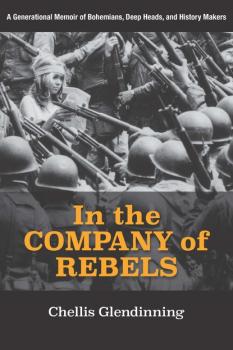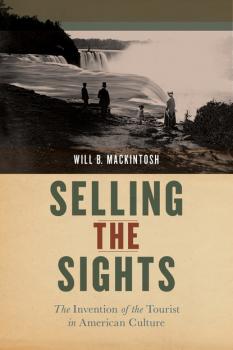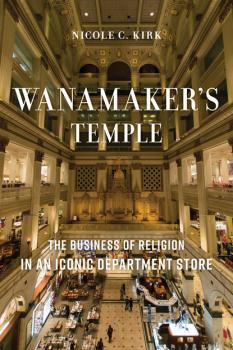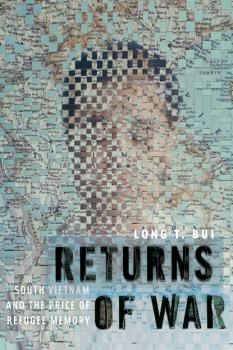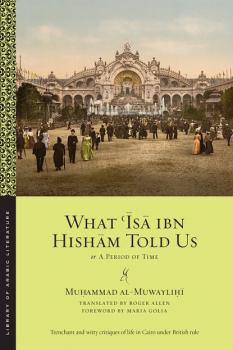ТОП просматриваемых книг сайта:
Историческая литература
Различные книги в жанре Историческая литература, доступные для чтения и скачиванияАннотация
Meetings with remarkable activists since the 1960s American social change movements dominated the 1960s and 1970s, an era brought about and influenced not by a handful of celebrity activists but by people who cared. These history makers together transformed the political and spiritual landscape of America and laid the foundation for many of the social movements that exist today. Through a series of 43 vignettes—tight biographical sketches of the characters and intimate memories of her personal encounters with them—the author creates a collective portrait of the rebels, artists, radicals, and thinkers who through word and action raised many of the issues of justice, the environment, feminism, and colonialism that we are now familiar with. From Berkeley to Bolivia, from New York to New Mexico, a complex, multi-layered radical history unfolds through the stories and lives of the characters. From Marty Schiffenhauer, who fought through the first rent-control law in the United States, to Ponderosa Pine, who started the All-Species Parade and never wore shoes, to Dan and Patricia Ellsberg, who released the Pentagon Papers and became life-long anti-war and antinuclear activists, the portraits bring out some of the vibrant, irreverent energy, the unswerving commitment, and the passion for life of these generations of activists. In our present moment, as many people find themselves in the streets protesting for the first time in their lives, In the Company of Rebels makes the connection to this relatively recent rebellious era. As the author comments on her own twenty-year old self, sitting at the counter of Cody’s Books in Berkeley in the early 1970s, thrilled about the times but oblivious of the work that came before: “I didn’t know anything about this courageous and colorful past. But now I know.”
Аннотация
A robust defense of a poetic genius Abu Tammam (d. 231 or 232/845 or 846) is one of the most celebrated poets in the Arabic language. Born in Syria to Greek Christian parents, he converted to Islam and quickly made his name as one of the premier Arabic poets in the caliphal court of Baghdad, promoting a new style of poetry that merged abstract and complex imagery with archaic Bedouin language. Both highly controversial and extremely popular, this sophisticated verse influenced all subsequent poetry in Arabic and epitomized the “modern style” ( badi' ), an avant-garde aesthetic that was very much in step with the intellectual, artistic, and cultural vibrancy of the Abbasid dynasty.In The Life and Times of Abu Tammam , translated into English for the first time, the courtier and scholar Abu Bakr Muhammad ibn Yahya al-Suli (d. 335 or 336/946 or 947) mounts a robust defense of “modern” poetry and of Abu Tammam’s significance as a poet against his detractors, while painting a lively picture of literary life in Baghdad and Samarra. Born into an illustrious family of Turkish origin, al-Suli was a courtier, companion, and tutor to the Abbasid caliphs. He wrote extensively on caliphal history and poetry and, as a scholar of “modern” poets, made a lasting contribution to the field of Arabic literary history. Like the poet it promotes, al-Suli’s text is groundbreaking: it represents a major step in the development of Arabic poetics, and inaugurates a long line of treatises on innovation in poetry.An English-only edition.
Информация о книге
Автор произведения Abu Bakr al-Suli
Аннотация
A fascinating journey through the origins of American tourism In the early nineteenth century, thanks to a booming transportation industry, Americans began to journey away from home simply for the sake of traveling, giving rise to a new cultural phenomenon —the tourist. In Selling the Sights, Will B. Mackintosh describes the origins and cultural significance of this new type of traveler and the moment in time when the emerging American market economy began to reshape the availability of geographical knowledge, the material conditions of travel, and the variety of destinations that sought to profit from visitors with money to spend. Entrepreneurs began to transform the critical steps of travel—deciding where to go and how to get there—into commodities that could be produced in volume and sold to a marketplace of consumers. The identities of Americans prosperous enough to afford such commodities were fundamentally changed as they came to define themselves through the consumption of experiences. Mackintosh ultimately demonstrates that the cultural values and market forces surrounding tourism in the early nineteenth century continue to shape our experience of travel to this day.
Аннотация
How a pioneering merchant blended religion and business to create a unique American shopping experience On Christmas Eve, 1911, John Wanamaker stood in the middle of his elaborately decorated department store building in Philadelphia as shoppers milled around him picking up last minute Christmas presents. On that night, as for years to come, the store was filled with the sound of Christmas carols sung by thousands of shoppers, accompanied by the store’s Great Organ. Wanamaker recalled that moment in his diary, “I said to myself that I was in a temple,” a sentiment quite possibly shared by the thousands who thronged the store that night. Remembered for his store’s extravagant holiday decorations and displays, Wanamaker built one of the largest retailing businesses in the world and helped to define the American retail shopping experience. From the freedom to browse without purchase and the institution of one price for all customers to generous return policies, he helped to implement retailing conventions that continue to define American retail to this day. Wanamaker was also a leading Christian leader, participating in the major Protestant moral reform movements from his youth until his death in 1922. But most notably, he found ways to bring his religious commitments into the life of his store. He focused on the religious and moral development of his employees, developing training programs and summer camps to build their character, while among his clientele he sought to cultivate a Christian morality through decorum and taste. Wanamaker’s Temple examines how and why Wanamaker blended business and religion in his Philadelphia store, offering a historical exploration of the relationships between religion, commerce, and urban life in the late nineteenth and early twentieth century and illuminating how they merged in unexpected and public ways. Wanamaker's marriage of religion and retail had a pivotal role in the way American Protestantism was expressed and shaped in American life, and opened a new door for the intertwining of personal values with public commerce.
Аннотация
The legacy and memory of wartime South Vietnam through the eyes of Vietnamese refugees In 1975, South Vietnam fell to communism, marking a stunning conclusion to the Vietnam War. Although this former ally of the United States has vanished from the world map, Long T. Bui maintains that its memory endures for refugees with a strong attachment to this ghost country. Blending ethnography with oral history, archival research, and cultural analysis, Returns of War considersstateless exiles. Returns of War argues that Vietnamization–as Richard Nixon termed it in 1969–and the end of South Vietnam signals more than an example of flawed American military strategy, but a larger allegory of power, providing cover for U.S. imperial losses while denoting the inability of the (South) Vietnamese and other colonized nations to become independent, modern liberal subjects. Bui argues that the collapse of South Vietnam under Vietnamization complicates the already difficult memory of the Vietnam War, pushing for a critical understanding of South Vietnamese agency beyond their status as the war’s ultimate “losers.” Examining the lasting impact of Cold War military policy and culture upon the “Vietnamized” afterlife of war, this book weaves questions of national identity, sovereignty, and self-determination to consider the generative possibilities of theorizing South Vietnam as an incomplete, ongoing search for political and personal freedom.
Аннотация
Trenchant and witty critiques of life in Cairo under British rule What 'Isa ibn Hisham Told Us is a masterpiece of early twentieth-century Arabic prose. Penned by the Egyptian journalist Muhammad al-Muwaylihi, this highly original work was first introduced in serialized form in his family’s pioneering newspaper Misbah al-Sharq ( Light of the East ) and later published in book form in 1907. Widely hailed for its erudition and mordant wit, What 'Isa ibn Hisham Told Us was embraced by Egypt’s burgeoning reading public and soon became required reading for generations of school students.Bridging classical genres and modern Arabic fiction, What 'Isa ibn Hisham Told Us is divided into two parts. Sarcastic in tone and critical in outlook, the first part of the book relates the excursions of its narrator, 'Isa ibn Hisham, and his companion, the Pasha, through a rapidly westernizing Cairo and provides vivid commentary on a society negotiating—however imperfectly—the clash between traditional norms and imported cultural values. The second half takes the narrator to Paris to visit the Exposition Universelle of 1900, where al-Muwaylihi casts a critical eye on European society, modernity, and the role of Western imperialism as it ripples across the globe.Paving the way for the modern Arabic novel, What 'Isa ibn Hisham Told Us is invaluable both for its insight into colonial Egypt and its pioneering role in Arabic literary history.An English-only edition.
Информация о книге
Автор произведения Muhammad al-Muwaylihi
Аннотация
In the tradition of Howard Zinn’s A People’s History of the United States, an engaging account of the last half-century of political discontent [b][/b]The history of the United States is a history of oppression and inequality, as well as raucous opposition to the status quo. It is a history of slavery and child labor, but also the protest movements that helped end those institutions. Protesters have been the driving force of American democracy, from the expansion of voting rights and the end of segregation laws, to minimum wage standards and marriage equality. In this exceptional new book, Dawson Barrett calls our attention to the post-1960s period, in which US economic, cultural, and political elites turned the tide against the protest movement gains of the previous forty years and reshaped the ability of activists to influence the political process. For much of the last half-century, policymakers in both major US political parties have been guided by the “pro-business” tenets of neoliberalism. Dubbed “casino capitalism” by its critics, this economy has ravaged the environment, expanded the for-profit war and prison industries, and built a global assembly line rooted in sweatshop labor, while more than doubling the share of American wealth and income held by the country’s richest 1 percent. The Defiant explores the major policy shifts of this new Gilded Age through the lens of dissent—through the picket lines, protest marches, and sit-ins that greeted them at every turn. Barrett documents these clashes at neoliberalism’s many points of impact, moving from the Arizona wilderness, to Florida tomato fields, to punk rock clubs in New York and California—and beyond. He takes readers right up to the present day with an epilogue tracing the Trump administration’s strategies and policy proposals, and the myriad protests they have sparked. Capturing a wide range of protest movements in action—from environmentalists’ tree-sits to Iraq War peace marches to Occupy Wall Street, #BlackLivesMatter, and more—The Defiant is a gripping analysis of the profound struggles of our times.
Аннотация
An exploration of the emergence of Rabbinic Judaism drawing on primary sources and new methods [b][/b]Over the past generation, several major findings and methodological innovations have led scholars to reevaluate the foundation of Judaism. The Dead Sea Scrolls were the most famous, but other materials have further altered our understanding of Judaism’s development after the Biblical era. This volume explores some of the latest clues into how early Judaism took shape, from the invention of rabbis to the parting of Judaism and Christianity, to whether ancient Jews considered themselves a nation. Rather than having simply evolved, “normative” Judaism is now understood to be the result of one approach having achieved prominence over many others, competing for acceptance in the wake of the destruction of the Jerusalem Temple in the year 70 CE. This new understanding has implications for how we think about Judaism today, as the collapse of rabbinic authority is leading to the return of the kind of diversity that prevailed during late antiquity. This volume puts familiar aspects of Judaism in a new light, exposing readers to the most current understanding of the origins of normative Judaism. This book is a must for anyone interested in the study of Judaism and its formation. It is the most current review of the scholarship surrounding this rich history and what is next for the field at large.
Информация о книге
Автор произведения Группа авторов
Аннотация
Accounts of remarkable women at the world's most powerful court Consorts of the Caliphs is a seventh/thirteenth-century compilation of anecdotes about thirty-eight women who were consorts to those in power, most of them concubines of the early Abbasid caliphs and wives of latter-day caliphs and sultans. This slim but illuminating volume is one of the few surviving texts by the prolific Baghdadi scholar Ibn al-Sa'i, who chronicled the academic and political elites of his city in the final years of the Abbasid dynasty and the period following the cataclysmic Mongol invasion of 656/1258.In this work, Ibn al-Sa'i is keen to forge a connection between the munificent wives of his time and the storiedlovers of the so-called golden age of Baghdad. Thus, from the earlier period, we find Harun al-Rashid pining for his brother’s beautiful slave, Ghadir, and the artistry of such musical and literary celebrities as Arib and Fadl, whobested the male poets and singers of their day. From times closer to Ibn al-Sa?i’s own, we meet women such as Banafsha, who endowed law colleges, had bridges built, and provisioned pilgrims bound for Mecca; slave women whose funeral services were led by caliphs; and noble Saljuq princesses from Afghanistan.Informed by the author’s own sources, his insider knowledge, and well-known literary materials, these singularbiographical sketches bring the belletristic culture of the Baghdad court to life, particularly in the personal narratives and poetry of culture heroines otherwise lost to history. An English-only edition.
Информация о книге
Автор произведения Ibn al-Sa'i

